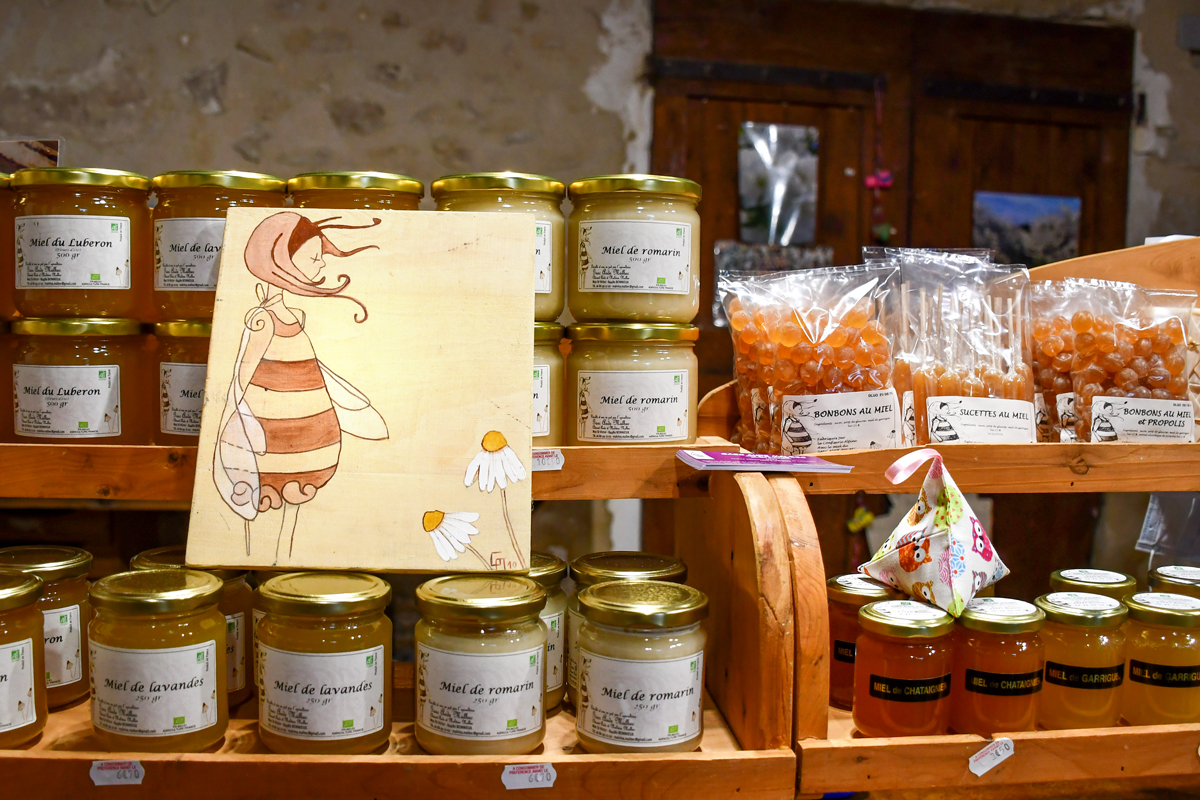During a recent countryside getaway, we had the privilege of visiting Malvina, the curator of the family-run boutique at Clément and Malvina's farm. In 2014, this passionate couple established a Groupement Agricole d'Exploitation en Commun (GAEC) in the picturesque commune of Bonnieux, nestled in the heart of Luberon. They manage a sprawling 30-hectare estate, home to lavender fields serving essential oil and honey production. Follow us on our tasting visit to one of the best honey from the Luberon!
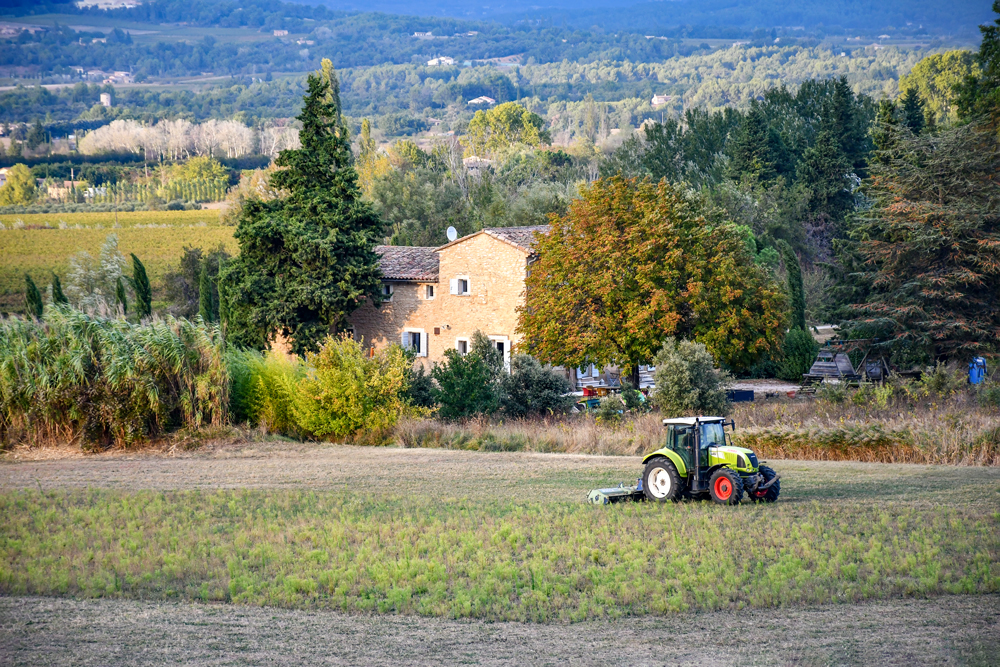
Clément's tractor on a lavender field © French Moments
What is a GAEC?
GAEC can be translated into English as "Joint Agricultural Production Group" or "Agricultural Cooperative." A GAEC is a legal structure in which multiple individuals or farmers jointly manage and operate an agricultural enterprise. It allows them to pool their resources, share responsibilities, and collectively run a farm or agricultural business for increased efficiency and effectiveness.
Why I like honey from the Luberon
When it comes to honey, I'm a true enthusiast. The golden nectar, harvested from the picturesque hives nestled in the heart of Provence, has a special place in my heart. There's something undeniably enchanted about honey made by authentic beekeepers who pour their passion into every jar.

Photo by Olena_Rudo via Envato Elements
Walking through the sun-drenched fields of wildflowers in Provence, where the bees diligently collect their nectar, I found a connection that transcends the average store-bought honey. It's a connection to the land, the buzzing bees, and the skilled hands that coax out the honey's natural goodness.
My suspicions on store-bought honey
That's why I've never trusted those bland jars you find on supermarket shelves. The allure of buying honey right from the source, where I can see the busy beehives and the beekeepers in action, has always been irresistible. There's an authenticity to it that's hard to beat.
My mistrust of store-bought honey goes back several years. However, a recent study confirmed my suspicion. Before diving into the world of honey from the Luberon, let's look at the shocking facts in this current investigation.

Photo by serhiibobyk via Envato Elements
Uncovering the alarming truth behind fake honey
In a shocking revelation, the report titled "From the Hives", published by the European Commission on March 23, 2023, exposes a grave issue in the European food market.
Among the 320 batches of honey tested by the official Joint Research Centre (JRC) laboratory, a staggering 46% are believed to be fraudulent, containing sugar syrups derived from rice, wheat, or sugar beet.
This practice is illegal, yet these deceitful products still reach unsuspecting consumers. While the health risks to consumers might be low, the act remains strictly prohibited.
The prevalence of this deception is significantly higher compared to the previous coordinated control plan across Europe in 2015-17 when only 14% of the samples analysed failed to meet the established authenticity criteria for honey.
What transpired in the interim?
The Joint Research Centre has developed a promising new methodology.
Formerly, fraudsters diluted honey with sugar syrups made from cornstarch or sugarcane. Awareness of increased scrutiny, they shifted to syrups primarily derived from rice, wheat, or sugar beet—syrups that the JRC's methods can detect. This remarkable result raises questions about why this methodology is not yet employed by official laboratories within the EU member states or private labs conducting industry tests.
The fraudulent dilution of honey with sugar syrups yields substantial profits with a low risk of being caught.
On average, imported honey in Europe costs around 2.17 euros per kilogram, while sugar syrups from rice range from 0.40 to 0.60 euros per kilogram.
Honey or not honey?
Currently, these counterfeit kinds of honey predominantly originate from China and Turkey. Samples were mainly collected in major ports where fraudulent products enter before dispersing across European routes: Antwerp, Hamburg, Barcelona, Le Havre, and more, along with inspections at the Poland-Ukraine border.

Photo by serenkonata via Envato Elements
This food scandal reveals the unsettling underbelly of a market where deception threatens consumer trust and the integrity of one of the world's most cherished natural products.
That's why, when I discovered a farm selling honey from the Luberon, we wanted to find out more (and to take a few pots of this delicious honey back home to England!) Let me introduce you to the world of pure honey at Clément and Malvina's farm.
Honey from the Luberon
Our visit to the farm's boutique was a memorable experience dedicated to unraveling the art of honey production. Malvina, the soul of the place, immersed us in the fascinating world of bees and honey.

Malvina, Aimée, Rachel and Pierre
A variety of honeys
Clément and Malvina take pride in offering visitors a diverse range of honey and related products.

You can find 4 to 6 honey varieties, each with a unique flavour and story. We enjoyed tasting:
- lavender,
- garrigue,
- rosemary,
- Luberon (a blend of summer flowers),
- chestnut,
- and acacia.

Their meticulous selection of these honeys reflects their commitment to quality and diversity.
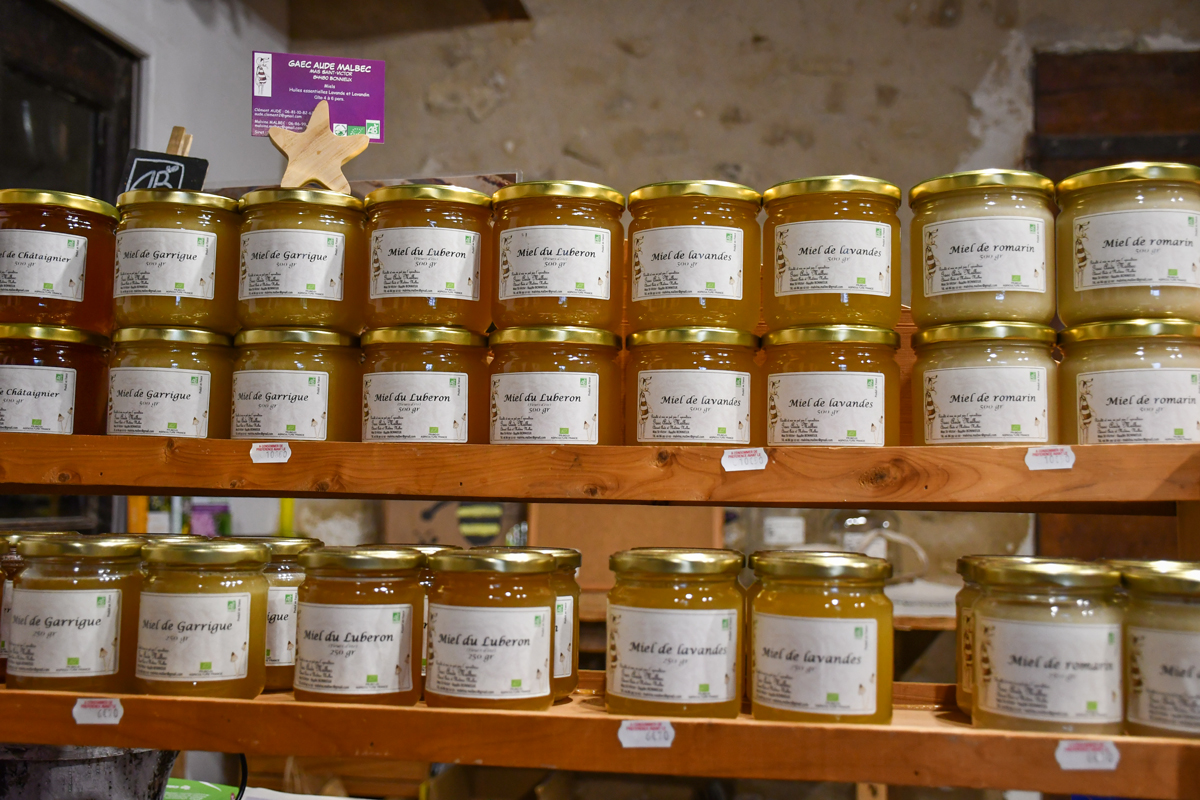


A variety of handcrafted products
To add a touch of uniqueness, Clément and Malvina have collaborated with local artisans of great repute to transform their honey into:
- chestnut honey soaps,
- honey candies,
- lollipops,
- and black nougat.

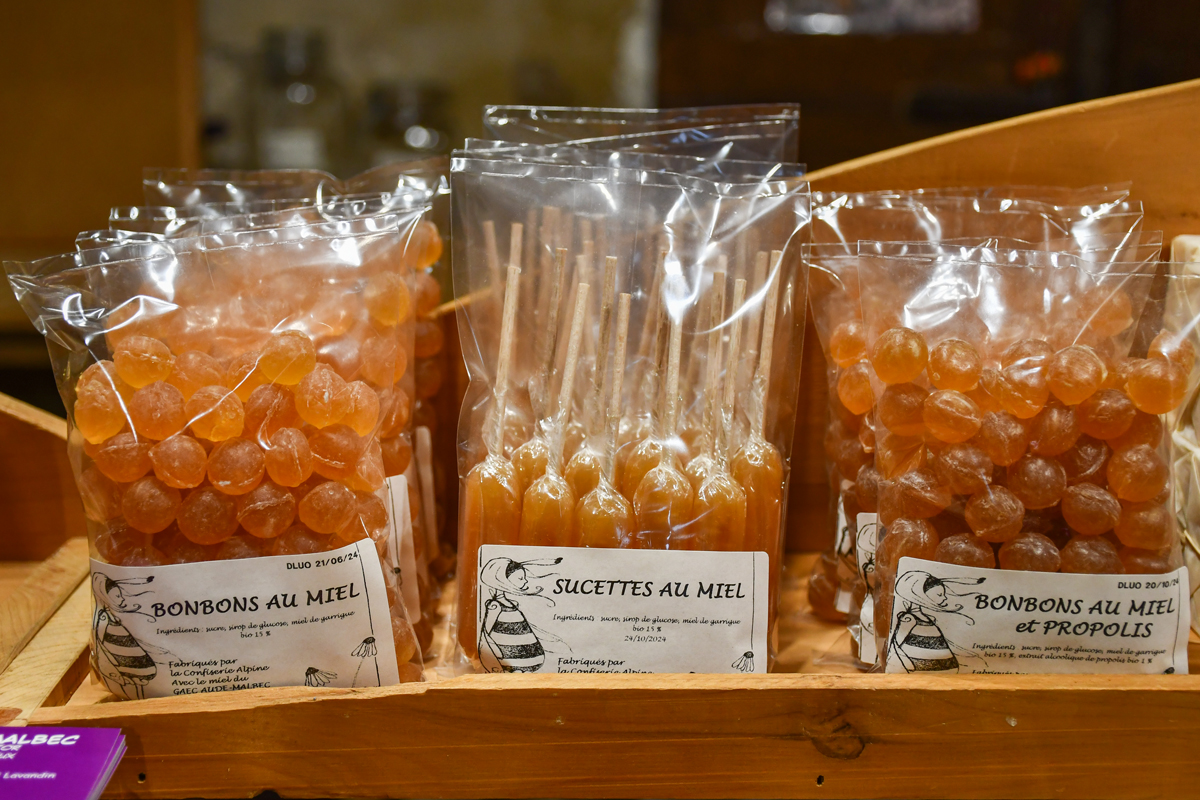

The nougaterie (nougat factory) in Saint-Didier, located in Vaucluse, skillfully uses lavender honey to create this delectable black nougat, which is especially beloved during the Christmas season as it's a traditional part of the 13 desserts of Provence.
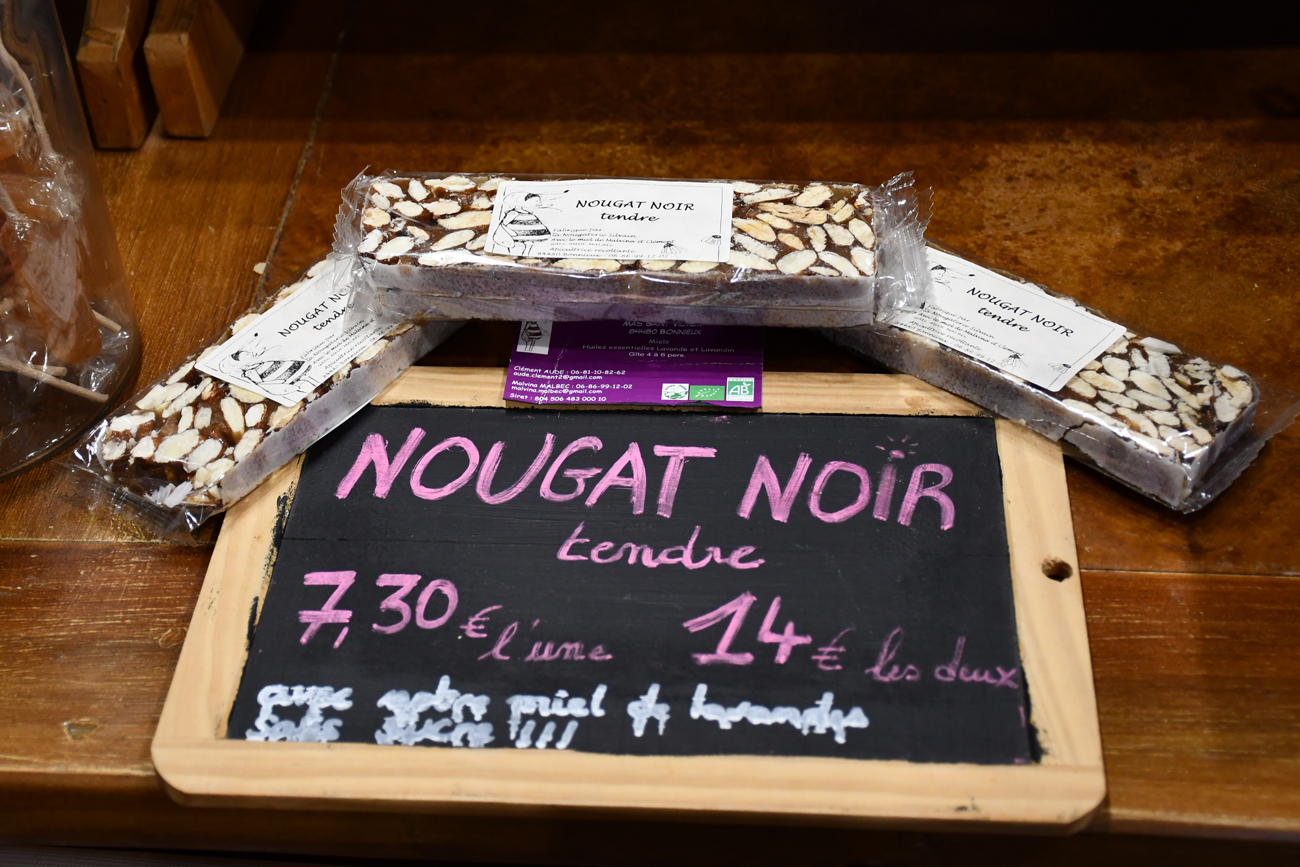
The highest-quality honey
One distinctive aspect of Clément and Malvina's approach is their unwavering commitment to the quality of the honey they offer. They exclusively sell honey from their hives, extracted and bottled on the farm, ensuring the utmost quality from start to finish.

A seasonal occupation
Apiculture is a profession dictated by the seasons, and Clément and Malvina embrace it fully.
With approximately 200 beehives to manage, their year starts as early as March with the spring visit.
This allows them to assess the health of each colony, helping them plan the upcoming apicultural* year (*relates to owning and taking care of bees).
Following this step, they can commence queen bee breeding, create new swarms, and prepare for future transhumance.

But what exactly is transhumance?
Clément and Malvina are transhumant beekeepers, which means they move their hives following the seasons and floral blooms.
For example, they head to the garrigue's heights of Marseille in spring to gather precious rosemary nectar.
They venture to the Vercors massif in May and June for acacia and chestnut honey harvesting.
Then, in June and July, they return to Bonnieux and the Sault plateau for lavender honey collection.

The Pays de Sault, Provence © French Moments
Honey harvest varies yearly, ranging from one ton in lean years to three tons in more prosperous ones, all with the same number of hives.
Autumn brings a set of tasks with the autumn visits, ensuring the colonies are well-prepared for winter by checking their health and supplies.
During winter, the farm focuses on bottling, selling products, and maintaining equipment, eagerly awaiting the return of the bees in spring.
An unforgettable experience
Our visit to Clément and Malvina's farm in Luberon was a deep dive into the world of beekeeping, nature, and passion.
Discovering their dedication to quality and their seasonal way of life left a lasting impression. Their exceptional honey and handcrafted products are undoubtedly worth a taste.
If you ever find yourself in the Bonnieux region, don't hesitate to visit their boutique for an authentic and sweet experience.

Where to find the farm's honey?
The farm shop is open on Wednesdays from 5 pm to 7 pm or by appointment. Click here to visit their website.
You can also find Clément and Malvina's products at Luberon Paysan, which is open daily. Website.
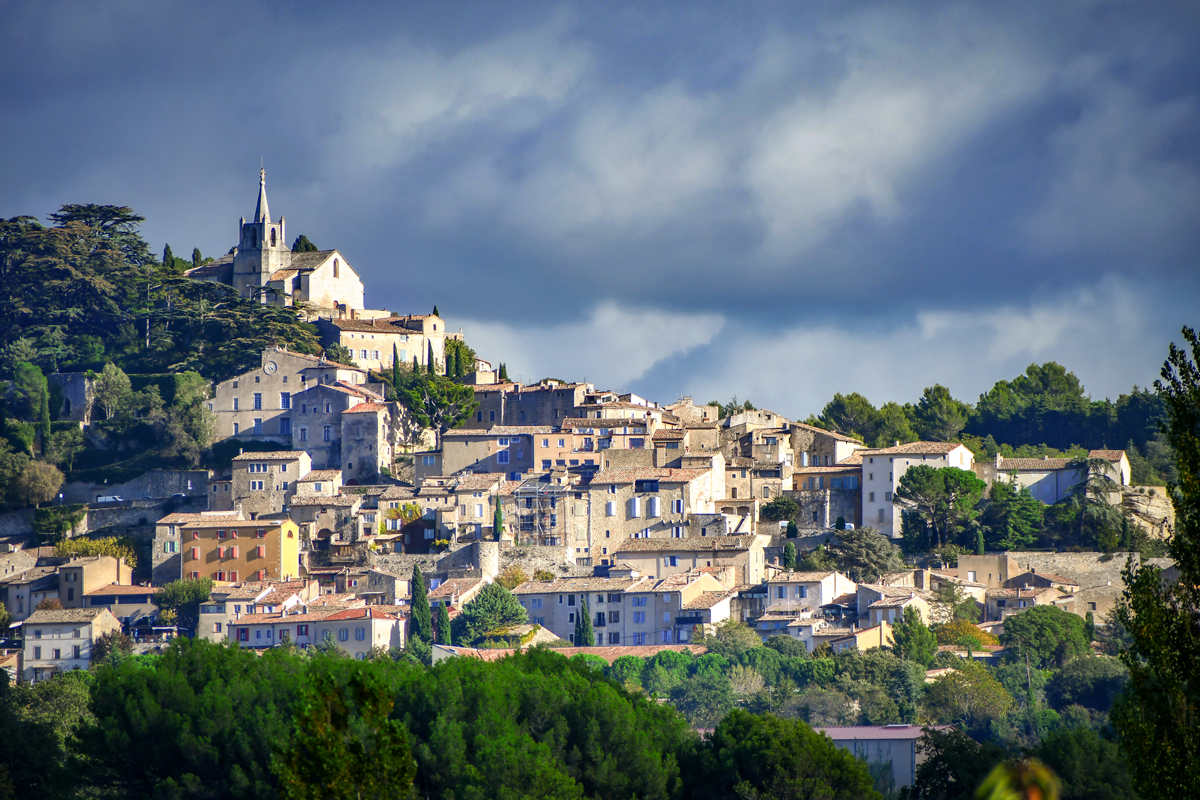
Bonnieux
Plan Your Provencal Escape
Are you feeling inspired? It's time to plan your adventure in this captivating corner of Provence. Whether you're drawn to the lavender fields, the vineyards, or the charming villages, the countryside of Bonnieux and Lacoste promises a memorable escape. So, pack your bags and immerse yourself in this idyllic region's rustic allure and natural splendour – your Provencal adventure awaits!
Visit the tourist board website for the area of Bonnieux.

On the way to Lacoste
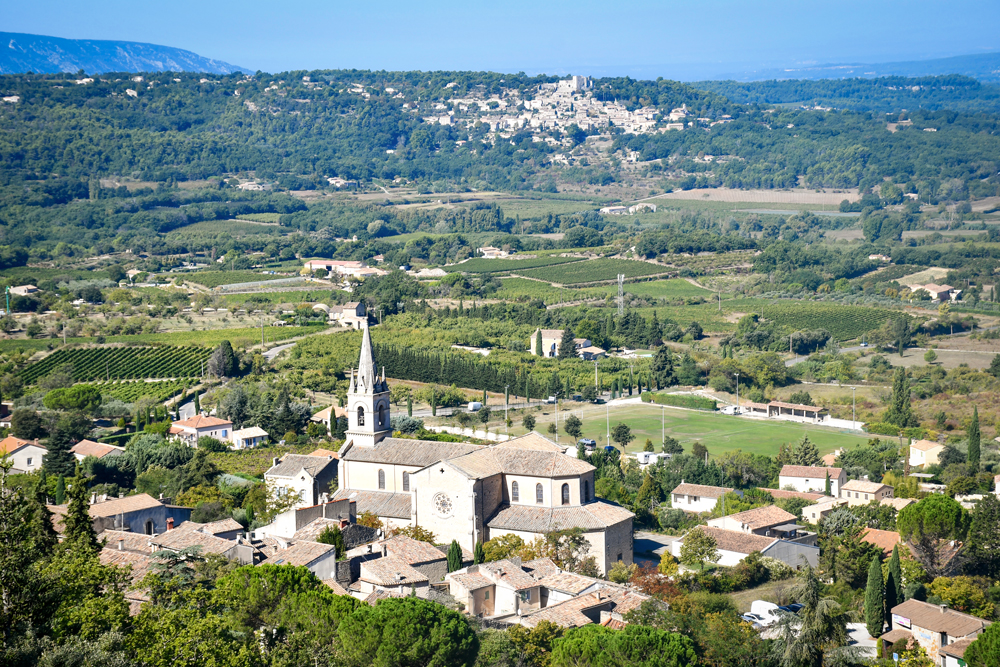
All photos © French Moments unless stated otherwise

